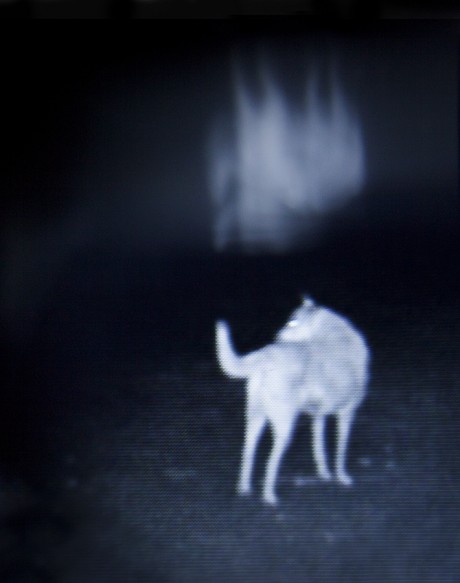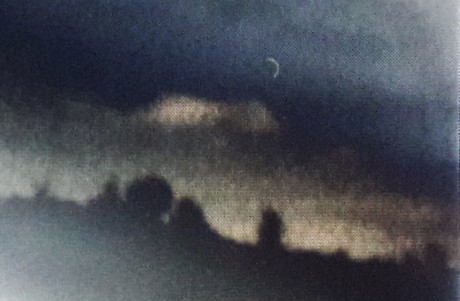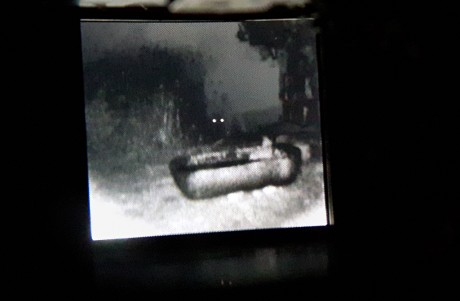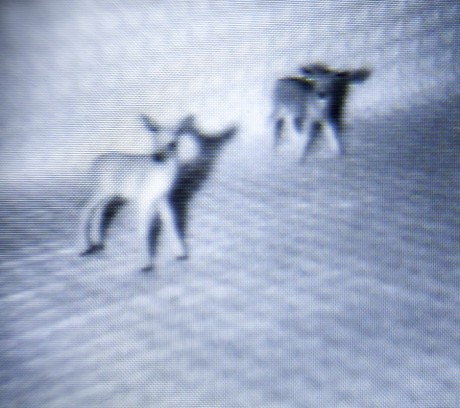Na'ama Porat | Kepek
08.06.17 - 08.07.17
Curators | Ariel Yanay & Nimrod Bar-Am
“We see by virtue of light, but not light itself,” observed the brilliant perception psychologist J. J. Gibson. The light strikes the eye, but the eye does not see it. What floods the eye is the surface, the texture, shape and color, and while these are all results of light, they are not experiences of light. And before we even notice it, they have already been assembled into meaningful objects in our consciousness.
Even the surface, the texture and the color are only very seldom the object of sight. The more fundamental and natural object of sight is their processed imprint – namely, the meaningful object. We see a house, a wild boar, a dog, a tree, not the surfaces from which these are constituted. For this reason, deconstructing the experience into its various constituents does not provide us with a better understanding of the assemblage, of the wonder of the meaningful imprint left behind. At most it affords us a better understanding of the limits of deconstruction.
From her earliest works Naama Porat has been investigating the illusive grasp of deconstruction upon experience. In those early works, she photographed homes shrouded in the glorious nighttime darkness of her home village, Klil. A light emanating from one of the rooms of the house was typically what made the act of photographing possible. Neither the light nor the house or the darkness constituted the work’s “subject” or “theme.” The light that emanated from the house placed the viewer inside the pupil of the photographer’s eye, outside the events taking place within the home, peeking in, seeking clues. But what happens in the house stays in the house. And from between the light that has escaped the house, and that which remains bound inside, between the limitations of the eye and the over-reach of our imaginative capacity, emerges – indeed flickers momentarily – the theme: the longing for belonging as a way of participating in meaning.
This very same longing, sometimes from within the home and sometimes from outside it, concerned Porat also in her series of moth photographs. In these works the moths are seen bound to the screen of her window by force of the tragic navigation command that is wired into them (the moth too, of course, does not see light: it is a quavering embodiment of hope, a flickering of the promise of harmony of the navigation mechanism and its objects). When the moth is photographed from within the house, its contour is a result of the gentle interaction between the light reflected off of its wings onto the darkness and the light that succeeds where the moth itself has failed: penetrating the room and the lens of the camera. The contour, like the experience, like the identity, is a result of the multilayered struggle between that which has succeeded in getting in, participating, belonging, and that which was left out, and has gone lost.
Another incarnation of this theme appears in Porat’s series of snow photographs (one of which we have chosen to include here as a way of anchoring the recent photographs to her earlier work). In these meticulous works, a thicket of trees takes up the role of the window screen through which the object (or the viewer’s gaze) seemingly tries to penetrate a world of meaning. An urban object of one sort or another, an enticing billboard, an apartment building, a frozen lake, now functions as the promised destination just beyond the thicket.
In the present exhibition, Porat took an impressive step forward in the ongoing exploration of how the subject or theme emerges out of the negotiation between the visible and the hidden, and in clarifying the limits of our ability to express the thing or theme by deconstructing it. Using night vision equipment, she follows what the shapes do at night, follows the fitful emergence of the beasts of the wadi out of patches of darkness, into the camera lens, and then out of the field of vision and of sense. The moment when the shapeless patch becomes an animal, and especially the moment when the animal fades back into the patch, is the thing she aims to capture. She posits miniature toy animals within an artificial reality against a backdrop that threatens at any moment to break down into its elementary and necessarily abstract parts: the surface and the color. She lets actual (yet altered, retouched) landscapes look at their artificial reflection in search for their lost meaning. In the central work of the exhibit, “Kepek” the dog (his name denoting “dog” in Turkish, and “image” in Hungarian) appears to share with the viewer some sort of mysterious display of northern lights. In fact, the magical patch of light above his figure is none other than his own reflection in the night vision device. Like his reflection, the dog too threatens at any given moment to dissolve once again into the meaninglessness from which it burst forth, like an unintelligible patch of light.
Light strikes the eye, but the eye does not see it. The eye sees through the thicket, and by virtue of it.
Nimrod Bar-Am and Ariel Yannay




